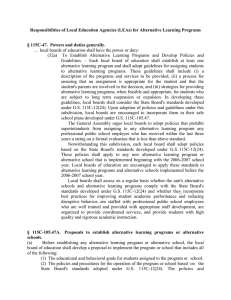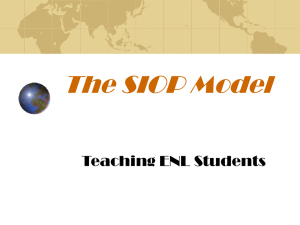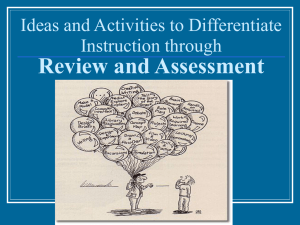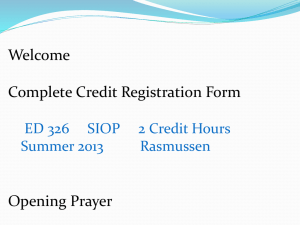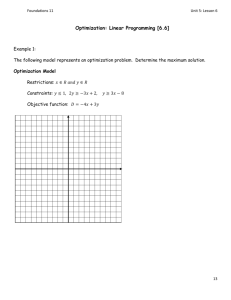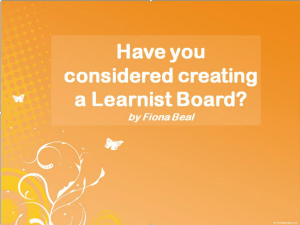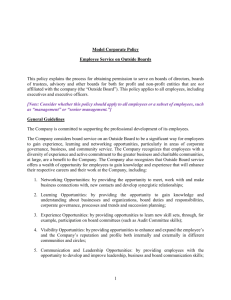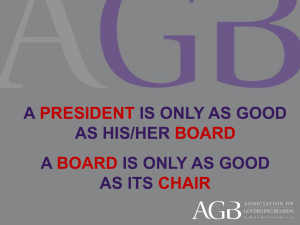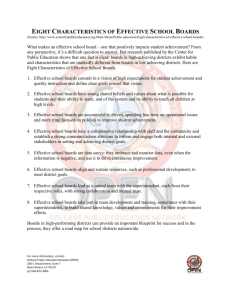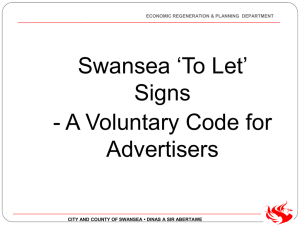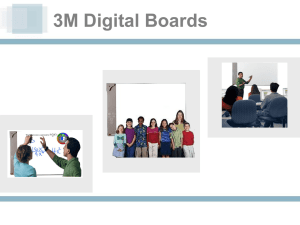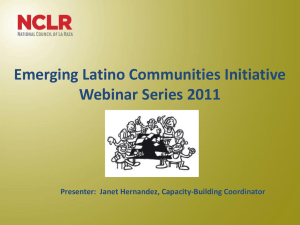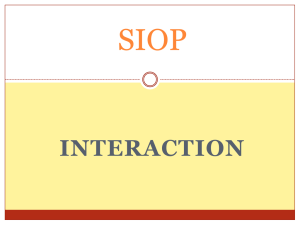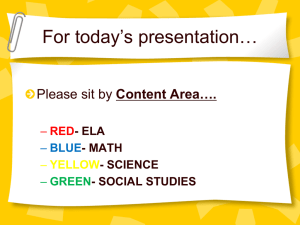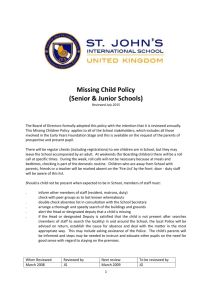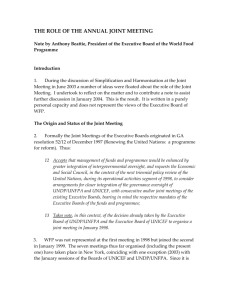SIOP-Review-and-Assessment
advertisement
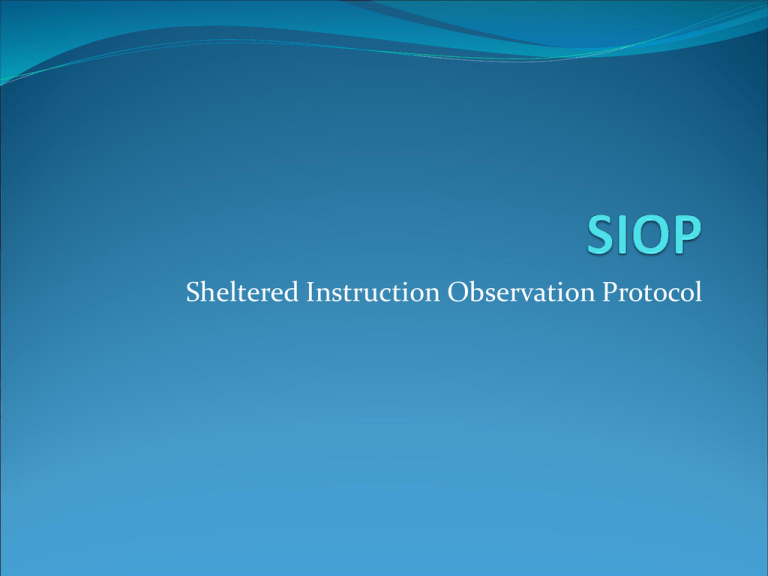
Sheltered Instruction Observation Protocol SIOP Component # 8 Find someone with the same number of buttons you have. Share at least one activity that you tried in your classroom since our last meeting. Share what you think worked well and what you would change to produce better results. Lesson Objectives Content Objective – You will be able to incorporate a variety of assessment techniques into lessons. Language Objective – You will use oral, written and physical means to provide specific feedback to students about their performance. Comprehensive Review of Key Vocabulary Comprehensive Review of Key Content Concepts Regular Feedback Provided to Students About Their Performance Assessment of Student Comprehension and Learning of All Lesson Objectives Comprehensive Review of Key Vocabulary We can help develop academic language and key vocabulary by teaching and then reviewing terminology and concepts through analogy – the process of relating new words to other words with the same structure or pattern. (photo/light – photography, photosynthesis, etc.) Multiple exposures to new terminology also builds familiarity, confidence and English proficiency. Words and concepts may be reviewed through paraphrasing, such as “Let me reiterate, or say again…” Key Vocabulary cont. Key vocabulary can also be reviewed more systematically but research clearly shows that word lists and dictionary definitions alone do not promote vocabulary and language development. The more exposures students have to new words, the more likely they are to remember and use them, especially if the vocabulary is reinforced through multiple modalities. An effective way to incorporate ongoing vocabulary study and review is through the use of individual Word Study Books organized by topic, language structure, etc. Key Vocabulary cont. Helping students review and practice words in non-print ways is beneficial as well. They may draw pictures or use physical gestures to remember a word. Using Pictionary or a charade-like game at the end of a lesson or unit can stimulate an engaging review of vocabulary. We also need to help students become comfortable with academic language by introducing and modeling academic tasks throughout lessons and units. Increasingly, our ELs need exposure, practice and review of terms used in lessons (discussion, share ideas) and in test directions or question prompts. Mix and Match (p. 181) Write a word on one index card and the definition on the other. Each student chooses a card. Students mix and say, “I have (term),what do you have?” Other student answers with definition. If students match with term and definition, they move to the outside of the group. When all words have been matched, collect, shuffle and repeat. Comprehensive Review of Key Content Concepts It is essential that ELs have key content concepts reviewed during and at the end of a lesson. Understandings are scaffolded when you stop and briefly summarize, along with students’ help, the key content covered to that point. A review might involve students summarizing with partners, writing in a journal, or listing key points on the board. It is important to link the review to the content objectives to stay focused on essential content concepts. Outcome Sentences I wonder… I discovered… I still want to know… I learned… I still don’t understand… I want to know more about… I will ask a friend about… This lesson makes me think of… Simultaneous Round Table (p. 178) Take a piece of paper and pencil and put your table number on it. Take one minute to write as many words or phrases connected to the SIOP training you’ve received. When one minute is over, pass your list to the person on your left. Read the items on the list and add any additional ideas. When all members of the group have seen every list, the groups report to the whole group. Regular Feedback Provided to Students Periodic review of language, vocabulary and content enables teachers to provide specific academic feedback to students that clarifies and corrects misconceptions and misunderstandings. Feedback also helps develop students’ proficiency in English when it’s supportive and validating. Specific feedback is generally given orally or in writing, but teachers can also provide it through facial expressions and body language. Students can also provide feedback for each other. Assessment of Student Comprehension and Learning of All Lesson Objectives Assessment is defined as “the gathering and synthesizing of information concerning students’ learning” and evaluation is “making judgments about students’ learning”. Assessment must be linked to the instruction and it needs to target the lesson objectives. Toward the end of the lesson, students’ progress is assessed to see whether it is appropriate to move on or whether it is necessary to review and reteach. Informal Assessment On-the-spot, ongoing opportunities for determining student learning Teacher observations Anecdotal reports Teacher-to-student, student-to-student conversations Quick-writes Brainstorming Other tasks that occur within instruction and aren’t intended to be evaluated according to set criteria Authentic Assessment Students are engaged in meaningful tasks that take place in real-life contexts Written pieces Audiotapes Student and parent interviews Videotapes Observations Creative work and art Discussions Oral group responses Performances Group Responses Thumbs up/thumbs down Number Wheels Number 1-3 for self-assessment Response Boards (p. 185) Each student, pair or group is given a response board. The teacher poses a problem for the students to solve. A designated student writes and displays the response board after conferencing with the others. The teacher can see if the class is ready to move on. Creating Response Boards Laminated file folders Laminated tag board White boards (Lowes and Home Depot will cut boards to size) Chalkboards Paper and pencil Lesson Objectives Content Objective – You will be able to incorporate a variety of assessment techniques into lessons. Language Objective – You will use oral, written and physical means to provide specific feedback to students about their performance.
